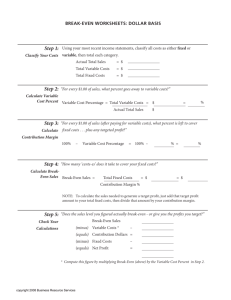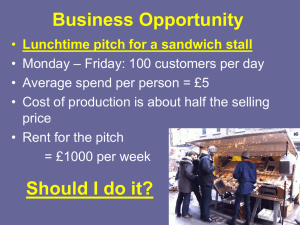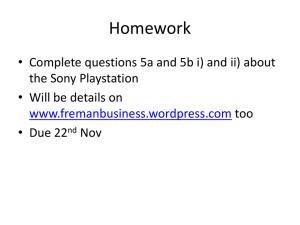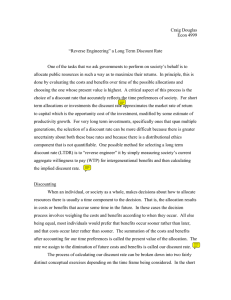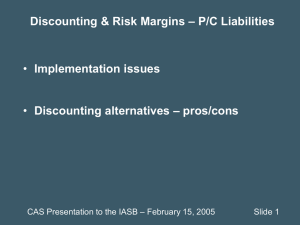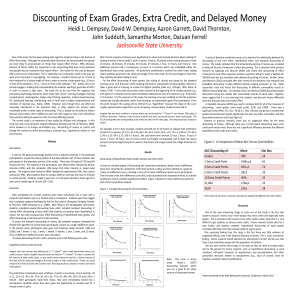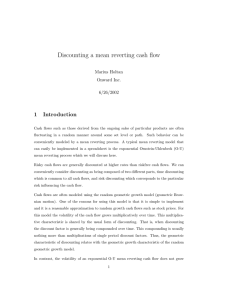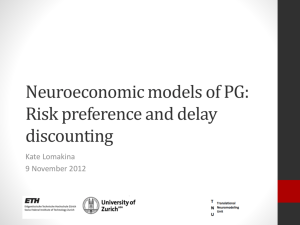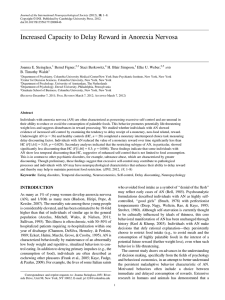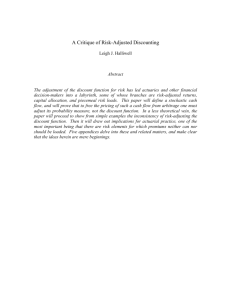September 2009
advertisement
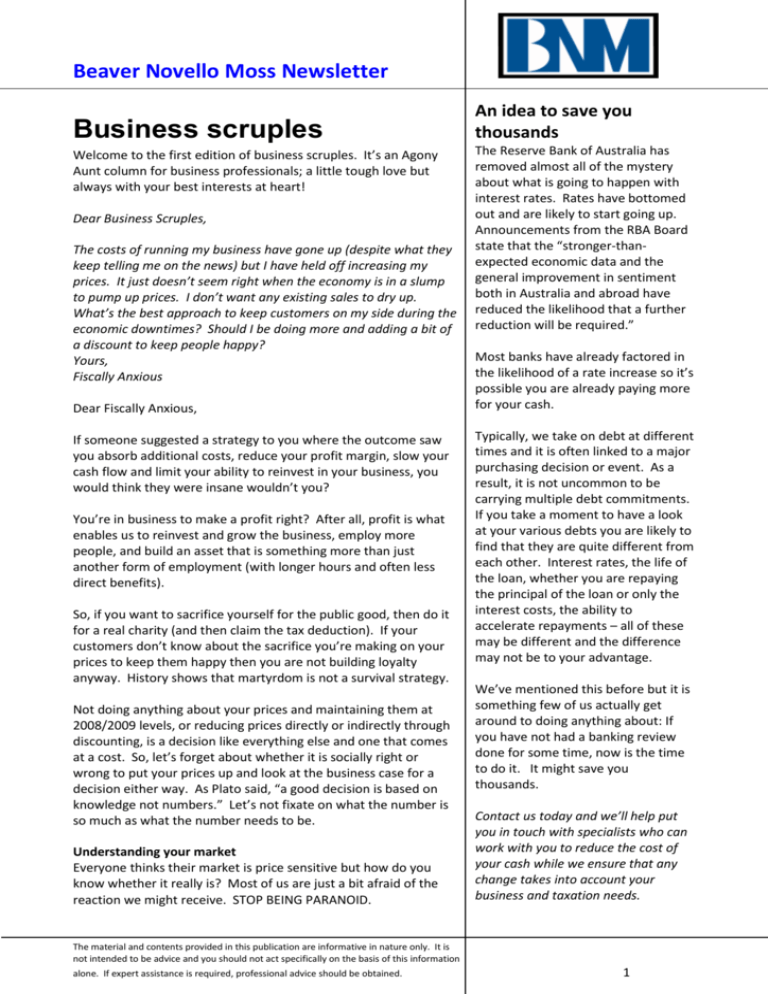
Beaver Novello Moss Newsletter Business scruples Welcome to the first edition of business scruples. It’s an Agony Aunt column for business professionals; a little tough love but always with your best interests at heart! Dear Business Scruples, The costs of running my business have gone up (despite what they keep telling me on the news) but I have held off increasing my prices. It just doesn’t seem right when the economy is in a slump to pump up prices. I don’t want any existing sales to dry up. What’s the best approach to keep customers on my side during the economic downtimes? Should I be doing more and adding a bit of a discount to keep people happy? Yours, Fiscally Anxious Dear Fiscally Anxious, If someone suggested a strategy to you where the outcome saw you absorb additional costs, reduce your profit margin, slow your cash flow and limit your ability to reinvest in your business, you would think they were insane wouldn’t you? You’re in business to make a profit right? After all, profit is what enables us to reinvest and grow the business, employ more people, and build an asset that is something more than just another form of employment (with longer hours and often less direct benefits). So, if you want to sacrifice yourself for the public good, then do it for a real charity (and then claim the tax deduction). If your customers don’t know about the sacrifice you’re making on your prices to keep them happy then you are not building loyalty anyway. History shows that martyrdom is not a survival strategy. Not doing anything about your prices and maintaining them at 2008/2009 levels, or reducing prices directly or indirectly through discounting, is a decision like everything else and one that comes at a cost. So, let’s forget about whether it is socially right or wrong to put your prices up and look at the business case for a decision either way. As Plato said, “a good decision is based on knowledge not numbers.” Let’s not fixate on what the number is so much as what the number needs to be. Understanding your market Everyone thinks their market is price sensitive but how do you know whether it really is? Most of us are just a bit afraid of the reaction we might receive. STOP BEING PARANOID. An idea to save you thousands The Reserve Bank of Australia has removed almost all of the mystery about what is going to happen with interest rates. Rates have bottomed out and are likely to start going up. Announcements from the RBA Board state that the “stronger-thanexpected economic data and the general improvement in sentiment both in Australia and abroad have reduced the likelihood that a further reduction will be required.” Most banks have already factored in the likelihood of a rate increase so it’s possible you are already paying more for your cash. Typically, we take on debt at different times and it is often linked to a major purchasing decision or event. As a result, it is not uncommon to be carrying multiple debt commitments. If you take a moment to have a look at your various debts you are likely to find that they are quite different from each other. Interest rates, the life of the loan, whether you are repaying the principal of the loan or only the interest costs, the ability to accelerate repayments – all of these may be different and the difference may not be to your advantage. We’ve mentioned this before but it is something few of us actually get around to doing anything about: If you have not had a banking review done for some time, now is the time to do it. It might save you thousands. Contact us today and we’ll help put you in touch with specialists who can work with you to reduce the cost of your cash while we ensure that any change takes into account your business and taxation needs. The material and contents provided in this publication are informative in nature only. It is not intended to be advice and you should not act specifically on the basis of this information alone. If expert assistance is required, professional advice should be obtained. 1 Beaver Novello Moss Newsletter Business scruples continued Judging by the recent inflation figures that saw Australia record one of the lowest inflation rates in a decade, it seems that you’re not the only one concerned about keeping prices in check (unless you’re an oil company). Everyone is holding their collective fiscal breath until the recession is no longer in range. It’s a bit like those movies where the good guys are hiding from the bad guy in a dark room and trying not to make a sound in case they are discovered. But, as American writer Irene Peter said, “Anyone who thinks there’s safety in numbers hasn’t looked at the stock market pages.” If you are dominated by competitors who have a market share the size of New Zealand and you have no differentiator, then you will be pressured on price. Whereas, if you are not dominated by your competitors or you are able to differentiate in other ways, you can take the focus away from price. Value conscious and price conscious are not automatically the same things. If you have a more personalised product and interaction with your market, then it is a question of whether or not a marginal increase is going to make any difference to your customers. A price increase or a discount is a small consideration compared to the broader decision of whether to buy what you offer now, later, or never. No one likes to pay more but if your costs have increased then a price increase is merely a reflection of what is happening in the broader market. The cost of discounting Any fool can sell at a discount. You can’t be a success if you only focus on sales volume without identifying the cost of your discounting strategy. Eighty three year old Hugh Hefner is also popular with the ladies but you need to ask yourself what the cost of that popularity actually is. Discounting creates a leverage impact on profits. Essentially, by discounting you are giving away some or all of your profits. The key is to understand the impact and just how far you can go. For example, a business with a 30% gross profit margin that offers a 25% discount (certainly nothing unusual about that in today’s market) needs a 500% increase in sales volume just to maintain the same position – and, in almost all cases, that’s just not going to happen. The result generally is that the business trades below its break-even point and generates a loss. You can only do that for a limited amount of time (and yes, some of your larger competitors might be engaging in a discounting war with you in an attempt to bury you once and for all). Many businesses don’t understand the impact of pricing on their business and instead measure success by sales activity rather than by their gross profit. It’s such a feel good measure to fixate on. Understanding your cost structure Do you know what your real cost of doing business is? Your break-even point is the level of sales activity where your business is neither making a profit or a loss. You calculate your break-even point by dividing your fixed expenses by your gross profit margin. This figure represents the level of sales income you need to break-even. With this piece of information you will know, at any time, whether or not you are profitable (providing your fixed expenses and profit margin have remained constant). Not only will your break-even point assist you to monitor business performance, it’s critical when deciding whether or not to offer a discount. If your break-even point is well below your current operating level then you have a good buffer in your profits to manage growth, invest in further capital opportunities, and to protect yourself against any sudden downturns in operating performance. And before you say “I know that” ask yourself how many people actually put this theory into practice. Even some of the largest businesses have been caught out on this one and tie up valuable resources in unprofitable projects and products. Putting up your prices during the down times is not an act of social betrayal. If your prices have increased you should flow these through unless you are comfortable making less for the same amount of effort, or you are in an industry that is so price sensitive that you have no choice but to follow the crowd like spawning salmon. If you want to know where your business is up to and the best strategies for your individual business, talk to us today. The material and contents provided in this publication are informative in nature only. It is not intended to be advice and you should not act specifically on the basis of this information alone. If expert assistance is required, professional advice should be obtained. 2



